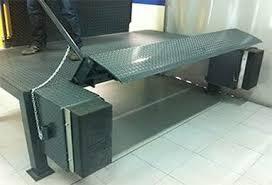Introduction
The automotive industry is evolving rapidly, not just in terms of technological innovation and fuel efficiency but also in how it handles sustainability and waste management. Among the most significant areas of focus is the recycling of materials used in the manufacturing process, particularly upholstery and fabric components. Textile balers have emerged as critical machines in facilitating the efficient recycling of these materials, offering a solution that supports the automotive industry’s sustainability goals. In tandem, industries like waste management are seeing similar innovations with solar powered waste bins, which further contribute to the broader movement towards environmental responsibility.
This article explores how textile balers are used to recycle upholstery and fabric components in the automotive sector and the broader implications for sustainability.
The Importance of Recycling in the Automotive Industry
Recycling has become a cornerstone of sustainable practices across all industries, but for the automotive sector, it carries additional significance due to the sheer volume of materials used in vehicle production. According to the European Automobile Manufacturers’ Association (ACEA), approximately 75% of a vehicle’s weight is composed of metals that can be easily recycled. However, about 25% consists of materials like fabrics, plastics, and glass, which present more significant challenges in recycling.
Textile waste from the automotive industry includes seat upholstery, carpeting, headliners, and other non-metallic components. If left unrecycled, these materials contribute to increasing landfills and environmental degradation. This has made the incorporation of textile balers into the automotive recycling process an essential step toward achieving a zero-waste manufacturing environment.
What Are Textile Balers?
Textile balers are machines designed to compress large volumes of fabric and other soft materials into dense, manageable bales. These bales are easier to transport and store, reducing the logistical challenges associated with waste management in the automotive industry. Typically, textile balers come in two forms:
- Vertical Balers: These are best suited for smaller facilities with lower waste volumes. They operate by compressing the materials vertically and are ideal for localized recycling centers within manufacturing plants.
- Horizontal Balers: Larger operations, such as those found in mass manufacturing environments, often use horizontal balers. These machines offer higher throughput and can process large quantities of fabric waste quickly and efficiently.
In the automotive industry, textile balers are used primarily to manage and recycle upholstery, carpeting, and other fabric components, which are difficult to process without proper machinery.
Recycling Upholstery in the Automotive Industry
Automotive upholstery, such as seat covers, armrests, and headliners, is generally made from synthetic materials such as polyester, nylon, and polyurethane, along with natural materials like leather. Due to their composition, these materials are not easily biodegradable, making them a significant environmental concern if improperly discarded.
The Process of Recycling Upholstery Components Using Textile Balers
- Collection and Sorting: The first step in recycling automotive upholstery is collecting fabric waste from assembly lines, used vehicles, and scrap yards. Once collected, the waste is sorted by material type (e.g., leather, synthetic fabrics) to ensure that it can be processed efficiently.
- Shredding: Before the fabric components are baled, they are typically shredded into smaller pieces. Shredding increases the surface area of the materials, making it easier to compress them in the baler and improving the overall efficiency of the recycling process.
- Baling: After shredding, the textile materials are fed into the baler. The baler compresses the fabrics into dense bales, which can be stacked, stored, or shipped to recycling facilities. The bales make it easier to transport large volumes of material while minimizing the space required for storage.
- Recycling and Repurposing: Once baled, the textile materials are sent to recycling plants, where they are either broken down into raw fibers for reuse or repurposed into new automotive components. For example, recycled upholstery may be used to create soundproofing materials or insulation for vehicle interiors.
The Role of Fabric Components in the Automotive Recycling Process
In addition to upholstery, the automotive industry uses a variety of other fabric components that also contribute to textile waste. These components include:
- Carpeting: Car floor mats and carpets are often made from synthetic fibers like nylon or polypropylene, which are durable but difficult to biodegrade. Baling these materials simplifies the recycling process and reduces landfill contributions.
- Seat Belts: Made from high-strength materials like polyester or nylon, seat belts are another fabric component that benefits from baling before recycling.
- Headliners: The interior ceiling of a car is typically covered by a fabric headliner, which can also be baled for recycling.
Textile balers help streamline the recycling of these components, enabling automotive manufacturers to meet sustainability goals by reusing materials and reducing waste.
Environmental and Economic Benefits of Using Textile Balers in Automotive Recycling
Reducing Landfill Waste
By recycling upholstery and fabric components through the use of textile balers, automotive manufacturers can significantly reduce the amount of waste sent to landfills. This supports both industry-wide sustainability initiatives and global efforts to mitigate the environmental impact of vehicle production.
Lowering Production Costs
Recycling fabric components allows manufacturers to lower production costs by reducing the need for new raw materials. For example, recycled polyester from old upholstery can be repurposed to create new seat covers or other interior components, cutting down on the cost of sourcing virgin polyester.
Reducing Carbon Footprint
The use of textile balers also contributes to a reduction in the carbon footprint of automotive production. Baling reduces the space required to transport fabric waste, meaning fewer trips are needed to recycling facilities. This, in turn, reduces fuel consumption and emissions associated with transportation.
Compliance with Regulations
Many countries have enacted strict regulations regarding waste disposal and recycling in the automotive industry. By incorporating textile balers into their recycling processes, manufacturers can ensure compliance with these regulations while enhancing their reputation for environmental responsibility.
Solar-Powered Waste Bins: A Parallel in Sustainability
While textile balers contribute to recycling efforts in the automotive industry, other sectors are also embracing innovative waste management solutions, such as solar-powered waste bins. These bins, equipped with compactors powered by solar panels, offer a sustainable solution to handling general waste. Solar-powered waste bins reduce the frequency of waste collection, minimize overflow, and lower fuel emissions by compacting waste efficiently.
The implementation of these bins in public spaces and industrial settings is part of a broader push towards green technologies, much like the automotive industry’s adoption of textile balers for fabric recycling. Both innovations demonstrate how sustainable waste management practices can be integrated across different industries to reduce environmental impact.
Conclusion
Textile balers have proven to be an essential tool in the automotive industry’s push towards sustainability, enabling the efficient recycling of upholstery and other fabric components. By compacting and baling these materials, manufacturers can reduce waste, lower costs, and meet stringent environmental regulations.
As the automotive industry continues to innovate, recycling practices will play an increasingly vital role in ensuring that sustainability goals are met. The role of textile balers in recycling upholstery and fabric components is just one example of how technology can help the industry move toward a greener future.
Additionally, advancements like solar-powered waste bins in the waste management sector showcase how sustainable technologies are transforming various industries, all contributing to a more environmentally responsible future.





